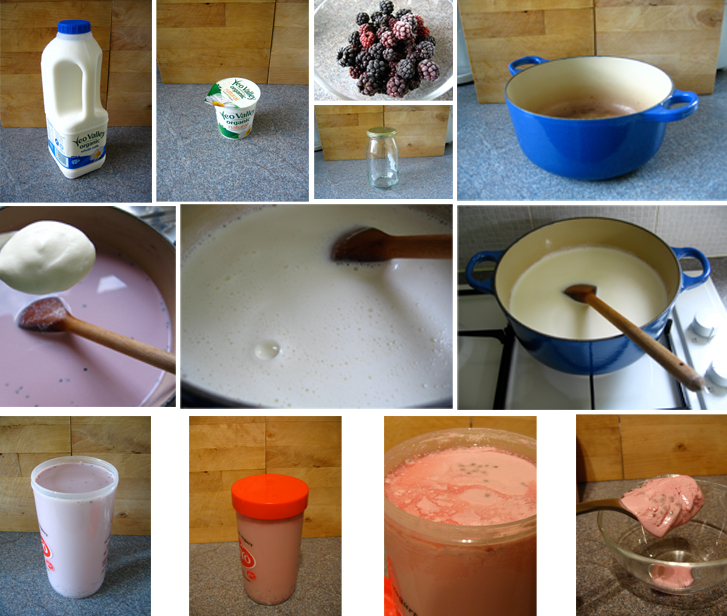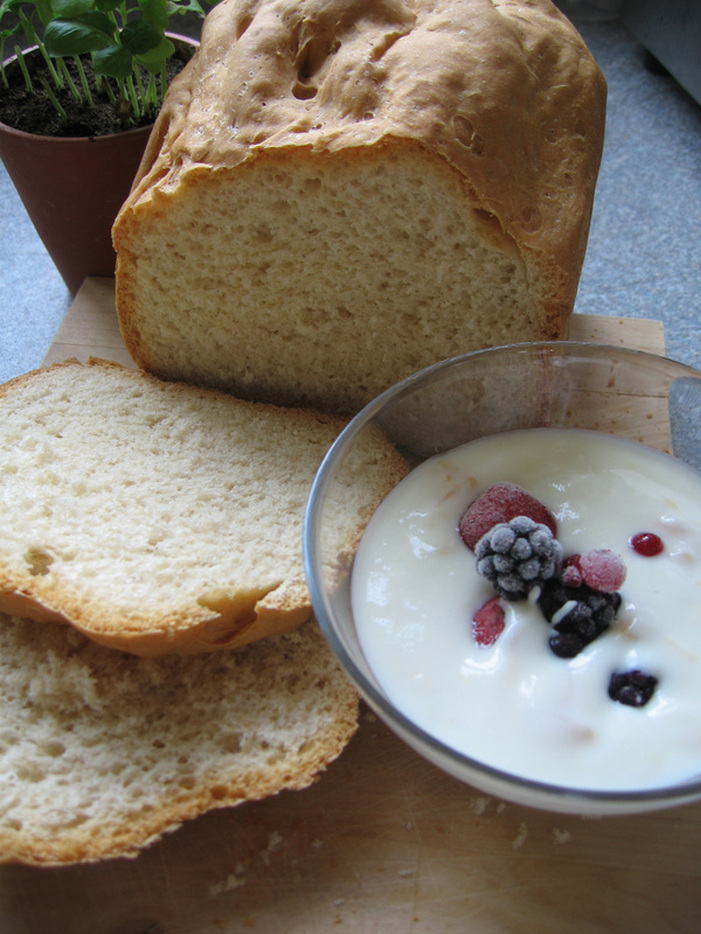Only after a quick search online, I realised that it is really easy to make yoghurt at home with just some simple cooking equipment. So I thought I will give It a try and It has been a rather interesting process to learn more about yoghurt.
The word “yoghurt” is derived from Turkish word related to “yoğurmak” - 'to knead' and “yoğun” - "dense" or "thick".
Yoghurt is believed to have been around for 4,500 years. Basically yoghurt is a semi-solid dairy product produced by the process of fermentation of milk. It is a process of transforming the lac-tose presence in the milk to produce lactic acid which acts on milk protein to give yoghurt its taste and texture.
In 1919, Issac Carasso , an entreprenuer from Barcelona started a small Yoghurt business. He industrialised the production of yoghurt and named the business after his son “little Daniel” - Danone. I am sure everyone heard of this brand, and it is now a leading producer of dairy products in the market.
We all know the health benefits of yoghurt. The live cultures present in yoghurt have various beneficial effects on our digestive systems. Regular intakes of yoghurt containing live cultures such as Lactobacillus Bulgaricus will help strengthens and stabilize our immune system. Lactic acid of yoghurt maximise calcium absorption. Not only that, yoghurt is rich in potassium, calcium, protein, and B-vitamins (B-12) riboflavin.
Do you know that only yoghurt that contains live cultures can be considered as a health food? If you look closely at most yoghurt packaging, it often stated that the yoghurt is made from live cultures, but the reality is, ALL yoghurt is made with live cultures at the beginning of the process, but many yoghurt products are heat-treated after the fermentation of the milk. This is to prolong shelf life of the product, so it can be kept in the supermarket for a longer period of time. During the process of heating, though, most of the bacterial in the yoghurt will be killed with the result that, what we actually eat is basically a flavoured and sweet dessert that have very LITTLE health benefits.
So, do look out for yoghurt that contains live cultures if you are looking for a healthy version.
The equipment you need to make yoghurt at home are:
- Pot to boil the milk
- Empty jam jars or plastic containers to keep the milk mixture
- Cooler box to store the jars/ plastic containers.
- Heat the milk in a pot for around 10 min until foam is starting to appear around the pot. (stir regularly to prevent burn at the bottom of the pot)
- Remove the pot from the heat immediately once foaming (if you want a fruity flavoured yoghurt, at this stage, you can add some crushed fruits such as strawberries, peach or anything that takes your fancy!)
- Let the milk cool down for about 30 mins. The milk should be lukewarm but not hot, as hot milk will kill the live cultures!
- When the milk is ready, add 2 to 3 big tablespoonful of the store-bought yoghurt and stir well.
- Pour the milk mixture to the empty jam jars or plastic containers. Put the lids on and close it tightly
- Boil some water from the kettle.
- Arrange the jars in the cooler box, find something to lift the jars from the bottom of the cooler box (this is to make sure the hot water is not in direct contact with the jars) and pour in the hot water.
- Cover the cooler box and leave it undisturbed for at least 7 hours. The longer the better, this allows the active bacterial to develop fully. Most commercially produced yoghurt do not allow the bacteria to multiply to the extent that you can when you make it at home. The longer you let the yogurt to sit in a room temperature before refrigerating, the stronger the bacteria cultures will become.
- Check after 7 hours. Once the milk become semi-solid, the yogurt is ready to be served!
- Keep the yoghurt in the fridge to slow down the fermentation process. You can keep some of these yoghurt for your next batch of fresh yoghurt.
You can also freeze the yoghurt and serves it like ice-cream.
As long as the yoghurt is made by properly fermenting the milk before freezing, the freezing process will not kill any significant amount of the cultures. During the freezing process, the cultures go into a dormant state, but when eaten and returned to a warm temperature within the body, it will become active again to provide all the benefit of normal yoghurt.
Imagine, wouldn’t it be nice to start a day by eating the yoghurt you made for yourself? Knowing that there are no added preservatives, colouring or large amount of sugar in the yoghurt?



 RSS Feed
RSS Feed
